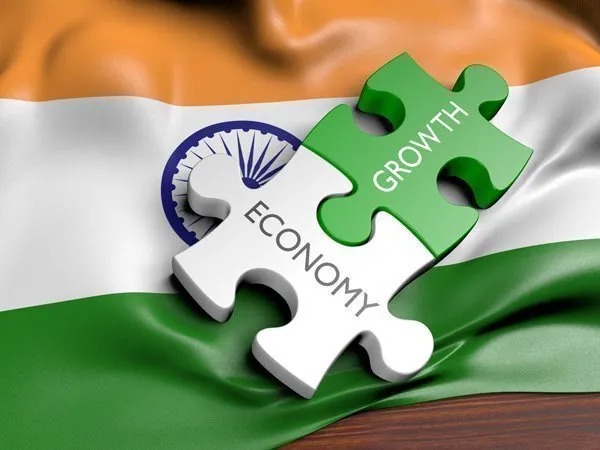New Delhi
As an outlier in becoming the fastest-growing major economy in the world, a term often used in the case of India, private final consumption expenditure (PFCE) would be the least probable trigger for this transformation. And yet, this yardstick has emerged as the catalyst in a growth story that has few equals, enough for it to be flagged in the Finance Ministry’s Monthly Economic Report for October, as the strongest driver of growth on the demand side. While some commentators, as the Finance Ministry notes, like to believe that India’s growth may soften soon with the PFCE likely to taper off early in the current year, so far, there is no evidence of that happening and going forward, as the Finance Ministry’s anecdotal evidence suggests, it may not happen anytime soon.
First, reports bear out that the festive season is keeping the PFCE robust and second, the post- pandemic shift towards services in the consumption basket elicits a quicker supply response than goods. Third, the unemployment rate is steadily declining, there is increasing disposable income for spending purposes and the pre-pandemic moderating growth in housing prices has given way to stronger growth, which has generated a substantial wealth effect to induce spending by households who own houses. Besides, a similar wealth effect has emanated from increasing stock market
The robust increase in consumption is evident in key high-frequency indicators registering strong growth in the April-September 2023 period compared to the corresponding period last year. Various reports also point to a surge in consumer spending during the ongoing festive season, reflecting buoyancy in demand which is also sustained by the unfolding latent demand that could not find an outlet during the pandemic-driven lockdown and is being seen as the most crucial factor boosting consumption demand. The unfolding is evident in the improvement of leading variables in the services sector, induced by the shifting composition of the consumption basket towards services in a lockdown-free environment. All services sector indicators have shown rising trajectories in the September 2023 quarter.
A steady decline in the urban unemployment rate has further contributed to keeping private consumption strong by increasing the disposable income in the economy. Labour markets have remained buoyant, with historically low unemployment rates helping to support economic activity. Real wages are also catching up, enhancing the disposable income of the households.
The wealth effect has also played an important role in keeping consumption levels elevated. The COVID-19 pandemic dampened housing demand and reduced real estate activities to an all-time low, leaving a whole lot of unsold inventory. This tempered the growth in housing prices and house rentals. Consequently, owners of real estate saw their wealth diminishing since housing formed the most important component of the non-financial wealth of households. The price trend was subsequently reversed with the removal of lockdown restrictions, return of labour to cities, resumption of offices and strengthening of domestic economic activity.
As a result, housing prices have begun to firm up, and households realised hefty, accrued gains. This made them feel richer than earlier inducing consumption. As per ANAROCK research, H1 2023 saw an all-time high housing sales of approx. 2.29 lakh units across the top seven cities, which is over 63 per cent of the total sales recorded in 2022. Aided by robust sales, existing housing inventory declined by 2 per cent yearly in Q2 2023 across the top seven cities. Housing prices are expected to rise further as housing demand appears to be brisk.
The Ministry also highlights an increase in stock market capitalisation which is driving the wealth effect and leading to strong consumption growth. Like an increase in housing prices does, an increase in stock prices can also engender a wealth effect. Solely an increase in stock prices can generate expectations effect. When the asset goes up in value, it results in higher consumption today on the expectation that income and wealth will be higher in the future. There is a long-run positive relationship between financial wealth assets and household consumption, implying that households are closely linked with the financial markets through their investments in the form of insurance, mutual funds, company deposits, company stocks, and other forms.
Going forward, the Finance Ministry expects expenditure to remain strong with the continued realisation of the wealth effect, decline in inflationary pressures, improvement in real wages and further improvement in consumer sentiments. As per the latest RBI Consumer Confidence Survey of September 2023, the current situation index reached a four-year high on the back of a better assessment of the current general economic situation and employment conditions. The general economic outlook, as well as the prospects for employment, income and spending, are expected to improve further over the next year as reflected in the future expectations index (FEI), also reaching a four-year high in the latest survey round.
Strong consumption has also been expressing itself digitally with the UPI transactions which soared to an all-time high in October 2023. The UPI transactions continue to break records and crossed 11 billion transactions in October 2023 on the back of the solid festive demand. It has also been increasingly used as a mode for micro- transactions, indicative of a deeper penetration of digital payments and acceptance by both buyers and sellers. This is evident from a decrease in the average ticket size for person-to-merchant UPI transactions from ₹731 in October 2022 to ₹658 in October 2023. Further, the average daily ETC volume rose by 13 per cent in October 2023, led by higher industrial and commercial activity aided by favourable demand conditions. The digital imprint of consumption, also seen in the substantial volume growth in electronic toll collection, signals a behavioural shift towards a cashless economy.

